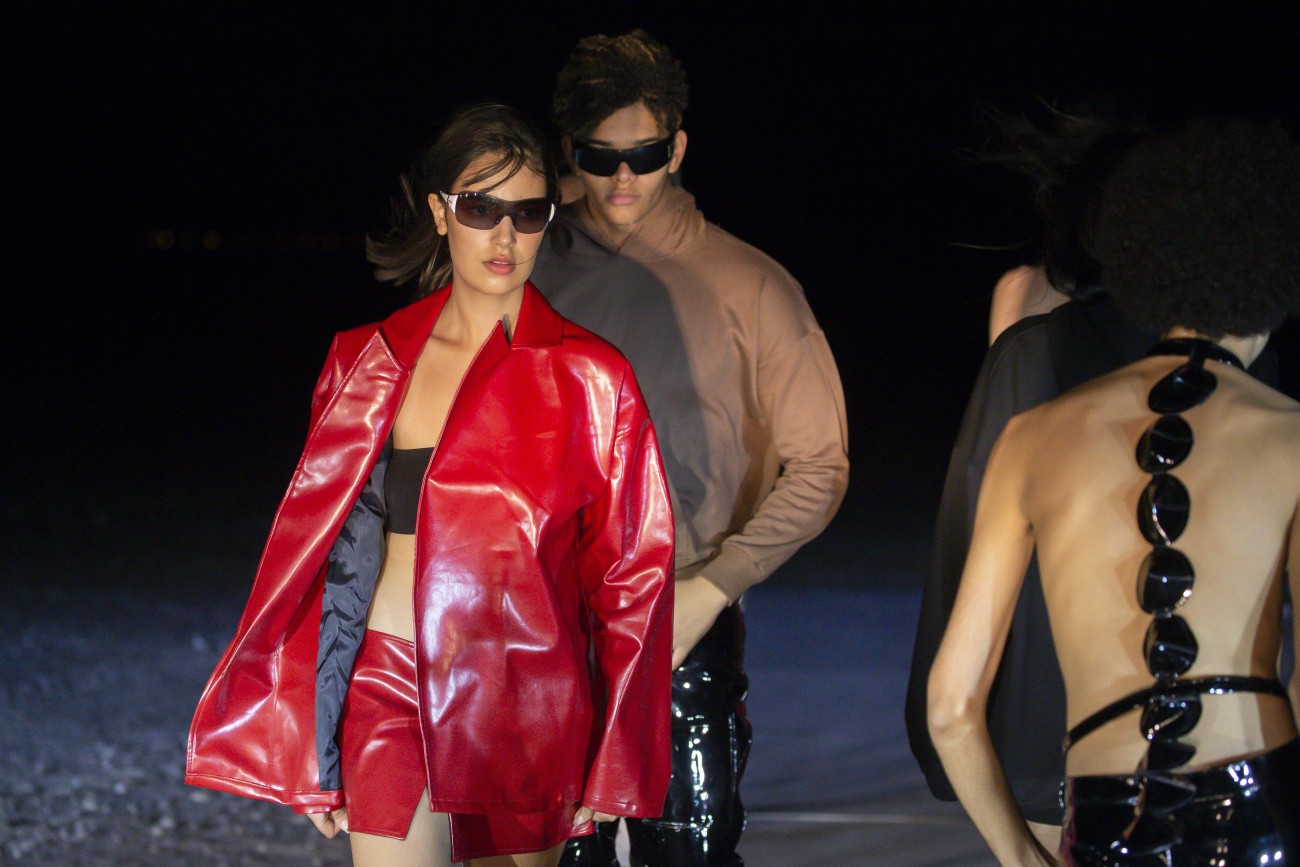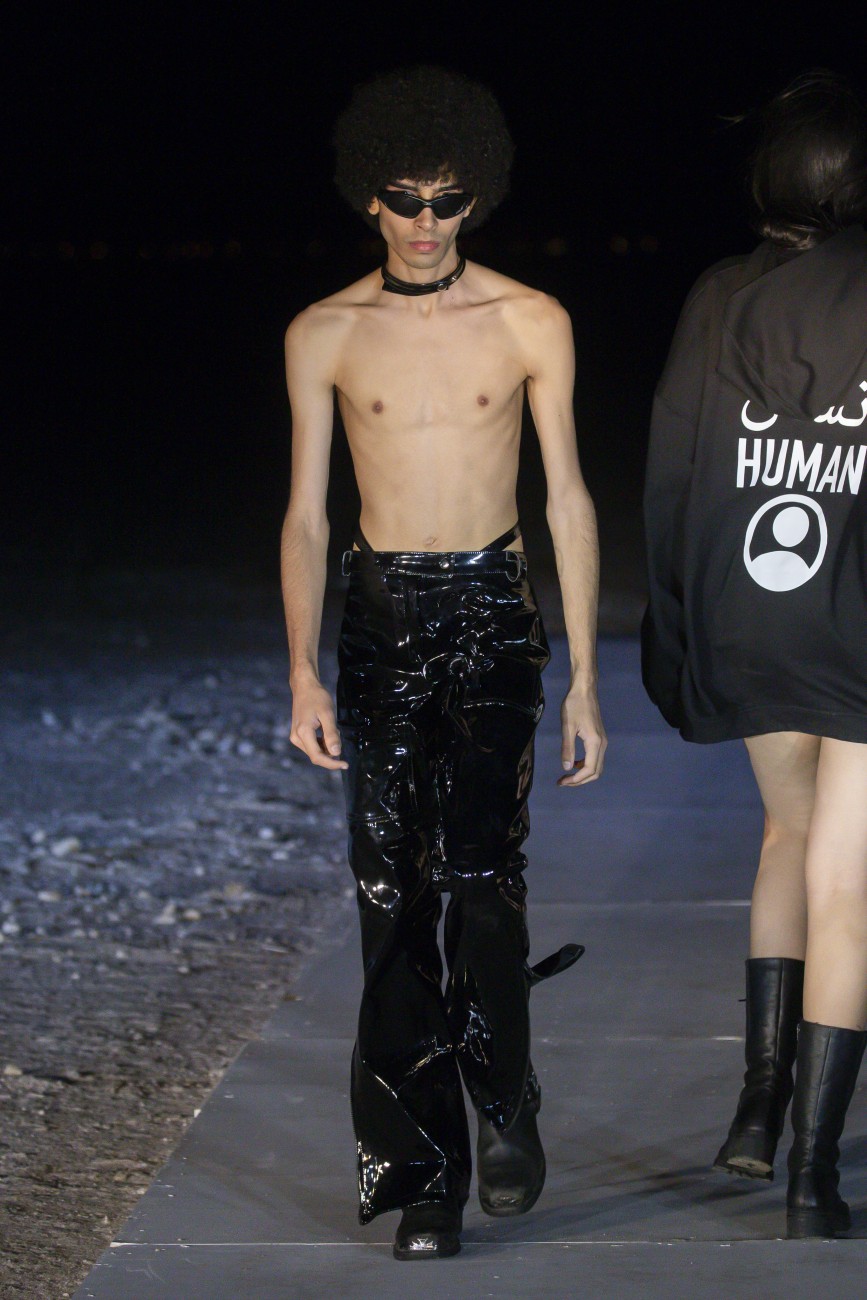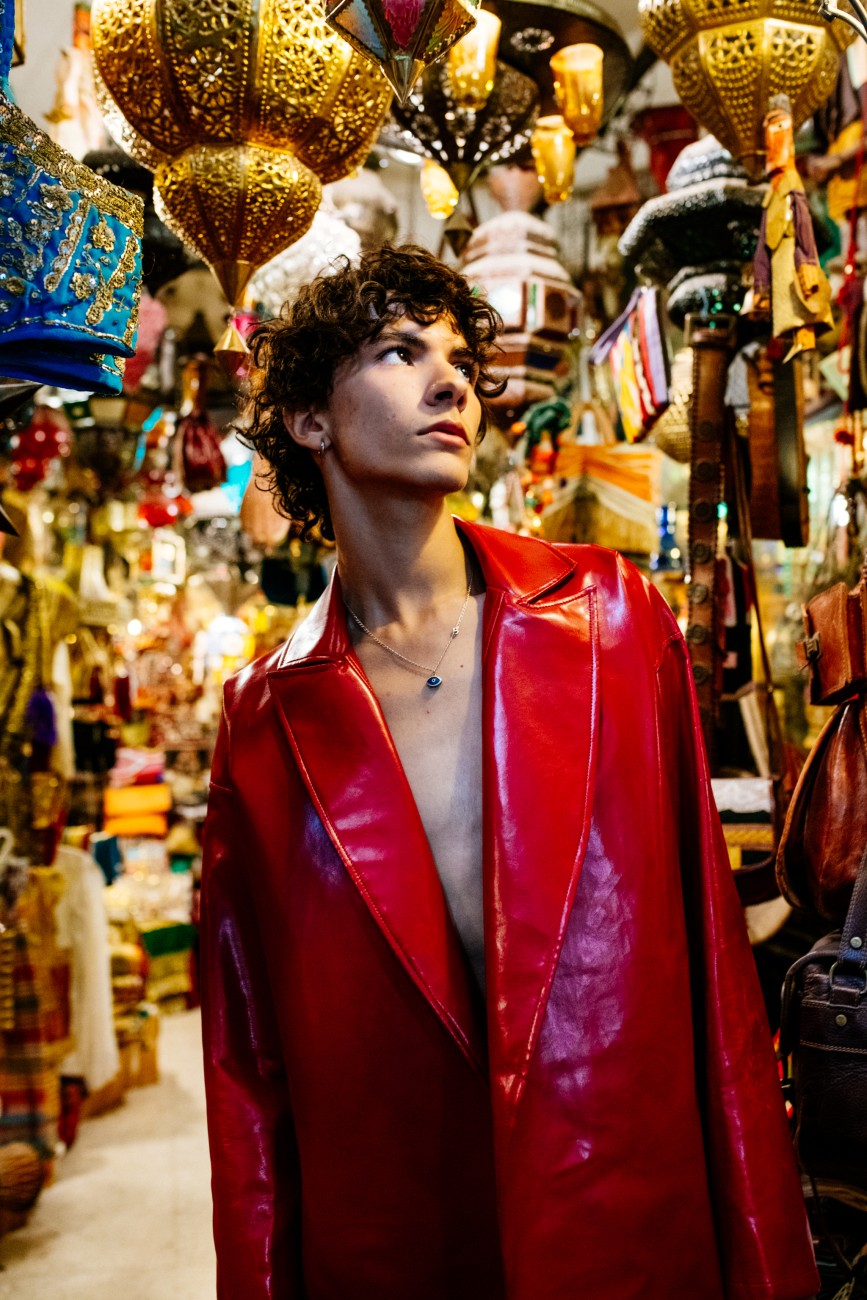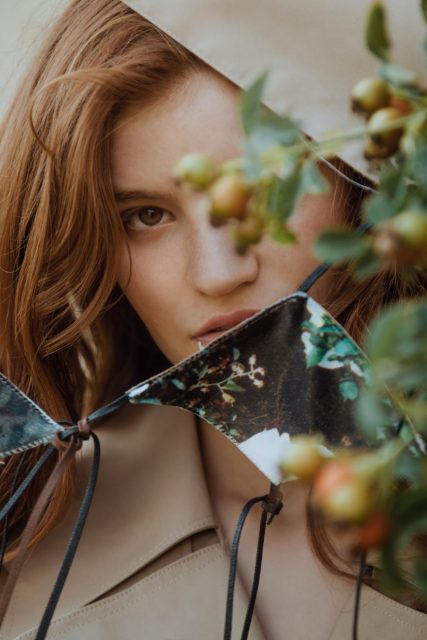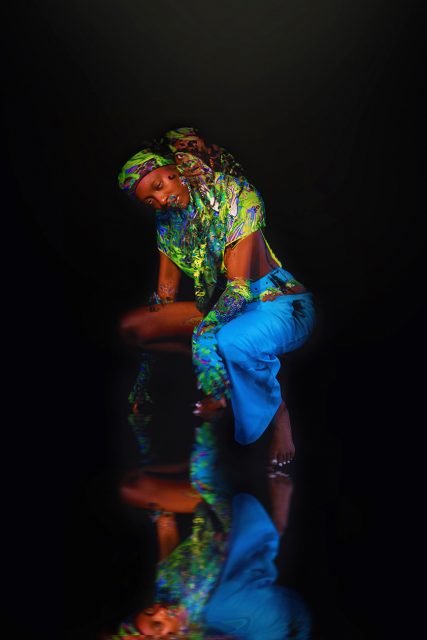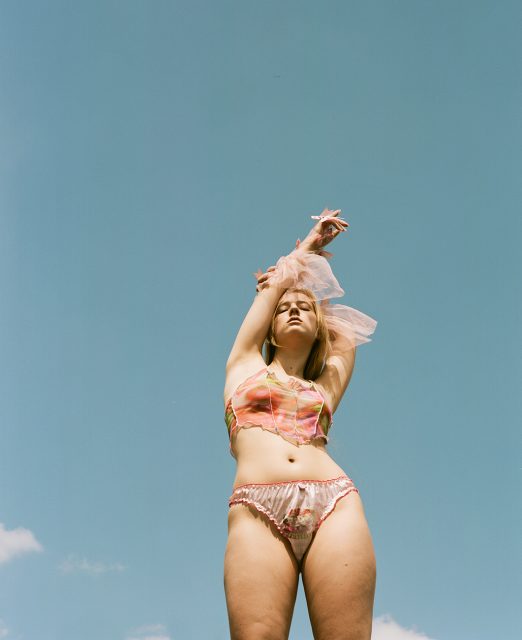Growing up in the capital, eighteen-year-old designer Haroun Ghanmi is already paving his way in the fashion world. Following his runway show at Tunis Fashion Week, we were stunned to discover that the designer behind the brand “Anomalies” is so young and yet so successful. We knew we had to meet with him and find out more.
“I got into fashion when I was a kid – I loved drawing and the first thing I ever drew was an evening dress”, he laughs. “I would steal my mum’s Vogue issues and just dive into the pages. I would also cut up small pieces of fabric and then make mini clothes for dolls with them”, he adds.
For this article, we met up with Haroun in his local Souk to talk about the Tunisian Youth, his latest collection and what it’s been like breaking into fashion at such a young age.
Œ: Tell us about your new-founded brand Anomalies – how did it come into existence?
Haroun: My brand’s name is “Anomalies” – it represents everything I was told not to do or not to be, the word “anomaly” (in French “Anomalie”) signifies the countering of nature, a glitch or maybe an awakened individual among washed away identical individuals. It represents my relation with the Tunisian society that I grew up in and I’ve always been, hmm, somewhat an anomaly in.
I never thought I would be launching a brand at this point, but everything just fell into place. I was working on my art school application project, where I worked a lot with leather and the idea of transfiguring a 2D form into a 3D shape. I had sketches and research files full of inspiration – historical references and art references. One day, my friend introduced me to Anis Montacer the organiser of Tunis Fashion week, who took interest in me – he liked my sketches and the whole idea of the collection, and he was particularly fascinated when I told him my age. I think that was the push I needed to start Anomalies.
Œ: What are the core values of your brand and what do you hope to achieve with it?
Haroun: My brand is a reflection of what I’m living as an 18-year-old in a North African country, it’s inspired by the rich historical and cultural aspects, yet also the political and sad reality that the Tunisian youth is living in. Its purpose is to inspire and to bring people’s attention people to the youth – to shock the elders so they understand the struggle and the repression that we’ve been living in. I hope to have more means to create more, to be able to create a revolution in Tunisia and shake things up in the fashion industry. And, of course, I want to inspire young people and influence the way they dress and think. My ultimate goal is that the echoes from my shows reach the whole world.
Œ: Who/what inspires you the most?
Haroun: I have a few people that inspire me like Martin Margiela and Azzedine Alaia. But, my biggest inspiration will remain Alexander McQueen. He’s the designer I relate to the most because I can think of so many events that I’ve lived through and was inspired by him – the good ones and the bad.
Even just going downtown in Tunis, I get inspired. Simply in raw life scenes – I see beauty even in ugly things. I see a story behind horrific events or stories of struggles, but the Tunisian youth, they will forever be my biggest inspiration. These kids are fighting to create from nothing – with no financial help and no support. They just want to push the limits, to create and revolt against a rotting narrow-minded society.
Œ: Tell us about the collection featured at Tunis Fashion Week – what were the inspirations behind it?
Haroun: The collection I presented is called 0.0.0 (triple zero) and it was quite an experimental project! I wanted to make clothes out of unusual materials that are not typically used for making garments. I was probably inspired mostly by the Tunisian Techno scene, where I found a little community that welcomed me and I grew up with. The collection is an insight into the evolution of techno style as if we imagine what people or techno people would wear one hundred years from now. I see a change in silhouettes mainly but I also made the materials compatible with the upcoming weather or atmospheric circumstances. Soft and breathable materials cut out of raw and rough up-cycled fabrics to reduce the environmental damage that the textile industry has caused over the centuries.
Œ: Your collection was presented at night time – is this where you best see your designs coming alive?
Haroun: There is a actually little story behind this *laughs* At first, my my show was scheduled during the last sight of sunset and the beginning of the night. But I couldn’t make it to Tozeur the night before to prepare my show schedule because I couldn’t afford a bus ticket. I had to work the night before to pay for my bus ticket *laughs*
So I was running with my suitcase, gripping on to all of my pieces making my way to the salt lake whilst the other designers were putting clothes on their models. I had no choice but to arrive there only 30 minutes before my show started and make it happen. All the pre-stress aside, it was the most exciting moment of my life!
Œ: How were your designs received at Tunis Fashion Week? Are you happy with the results?
Haroun: I was happy with how the show went, but throughout, I had this little voice in my head telling me: “you could’ve done better, you could’ve been more organised!”. But even with that little voice, it was such a beautiful experience for my first show ever at eighteen. I felt proud of myself and I felt that people finally saw me! I’m not that boy hiding in the atelier anymore *laughs*
Œ: You’re so young and yet already so successful – how has this transition been for you? Overwhelming or exhilarating?
Haroun: I feel blessed and seen. But I’ve been feeling pretty overwhelmed with the amount of exposure I’ve received at this young age. When I started making clothes all I was thinking about is “create, create, create”, I never thought my creations would see the light. I had this vision in my head of these imaginary characters and I just wanted to see them alive, I wanted to see the clothes on people. If you create with that vision in mind, nothing can go wrong.
Œ: What do you think about the Tunisian fashion scene? What changes would you like to see?
Haroun: Unfortunately, Tunisia still doesn’t have quite THE established fashion scene – we’re still a bit behind. But that doesn’t push discourage me to make a change and to fight for it! If you can’t find your inspiration you have to become your inspiration. I feel that designers should be more personal with their shows to make this happen. Presenting ten designers in the same venue kills the individual touch of each one and doesn’t reflect the vision well enough. I think big corporations should invest in the fashion industry more and definitely invest in young artists and designers.
Œ: What is your current process in terms of designing collections – are they designed to be worn or just for editorials?
Haroun: I designed 0.0.0 collection, which is currently getting featured in magazines and spreads. I also sent some pieces to Paris for a stylist who would style artists during Paris Fashion Week – I just want my clothes to travel, to be worn, and to be seen! Sometimes I make some customised pieces for clients. I recently started sketching my Spring/Summer collection so I hope to find some funding for this.
Œ: What’s the next step for you?
Haroun: My next step is to finish high school and go on to study fashion at the Antwerp Academy of Fine Arts. I’m keen to learn more – to improve my skills and technique. I’m currently doing research and sourcing inspiration for my next collection. I think Antwerp would be a great fit!
Œ: Where do you envision yourself in ten years time?
Haroun: In ten years, I will have (hopefully) finished my fashion degree and be an internationally established fashion designer. I’d like to keep creating and improving – searching for new techniques, materials and inspiration, whilst keeping that same energy as I have now. Ideally I will have found a niche style and have painted my overall philosophy.
Fashion – Anomalies by Haroun Ghanmi
Photography – Frederike Wetzels
Models – Yassin Walhezi, Achwek Arfaoui, Yassin Nagba, Zohra Gharbi and Raniia Hanchii
Special Thanks to Tunis Fashion Week and Discover Tunisia


